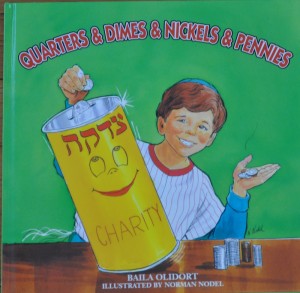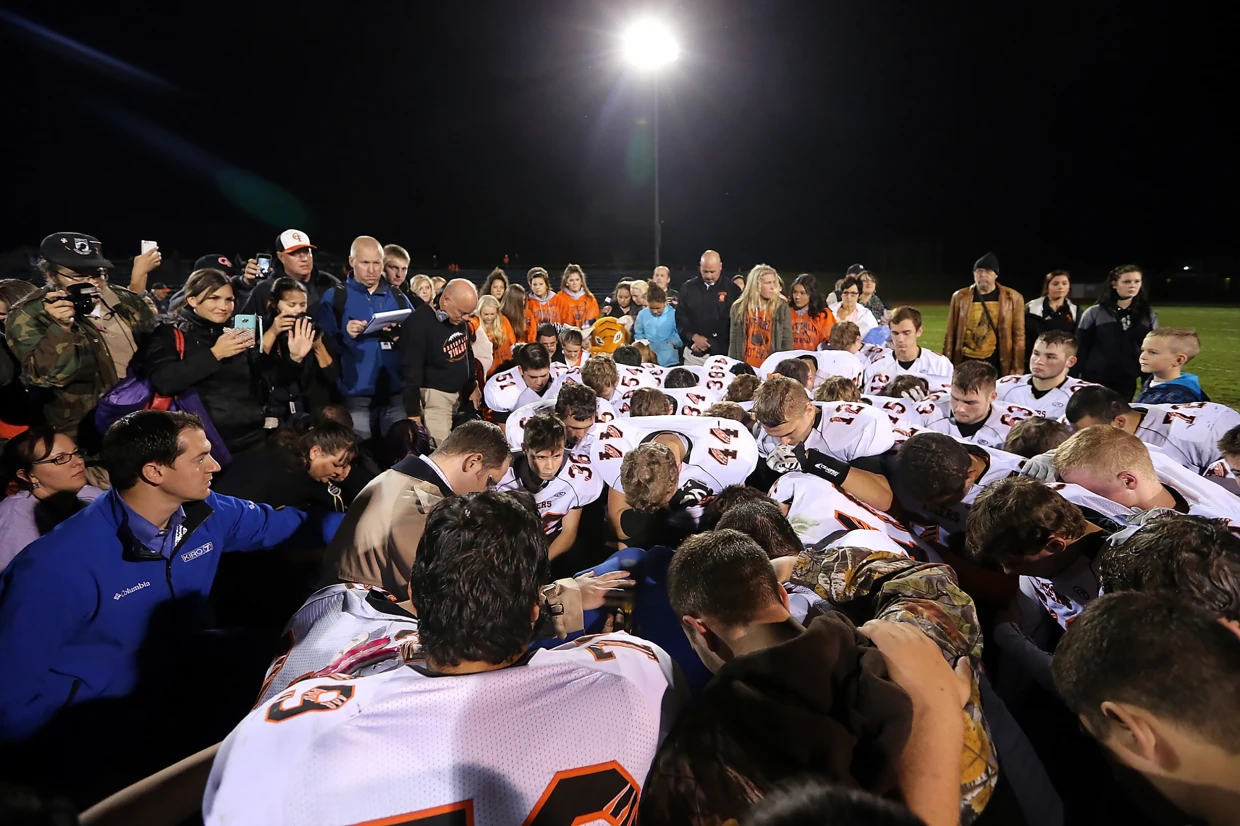January 20, 2012
My son’s eyes spotted a penny on the family room stairs.
“Mom, you dropped a penny.”
“Oh, you can have it. What do you want to do with it?”
“I want to give it to poor people,” he said.
Simon walked up the steps into the living room and pointed at his wooden tzedakah box, out of his reach on a shelf. I pulled it down, and he put in the penny. I hid my astonishment. Ah, the difference a year can make in a child’s embrace of the notion of helping someone else.
Last year, my husband and I took a baby step in our attempt to teach Simon about tzedakah. We dubbed one night of Hanukkah “tzedakah night” and gave him his first tzedakah box – a simply decorated wooden box with a slit. He was weeks shy of 3 and seemed most interested in figuring out how to dump coins from the box. We also gave him the book, Quarters & Dimes & Nickels & Pennies, by Baila Olidort. Published in 1993 by Merkos L’inyonei Chinuch’s Young Readers Division, the book tells the story of how a boy gains understanding of charity after receiving his first yellow tzedakah can.
We read the book occasionally to Simon last year, never knowing whether the message seeped through. In the book, the boy’s mother gives him coins every day to put in the can and says, “That way we begin each day by helping people who have less than we do.” When the can is full, the mother takes her son to a soup kitchen. Together, the soup kitchen manager, the mother, and boy, count the coins. They figure out that the boy can buy lunch for two people. The boy leaves with a new red empty tzedakah can and begins the process anew.
Real life came close to mirroring fiction in our house. During the last year, my husband and I often gave spare change to Simon for his tzedakah box. We did not do it daily, but tried to establish a pattern. On Fridays, I often gave Simon change to put in his box before we lit Shabbat candles.
As Hanukkah approached this year, we sat down as a family to tally Simon’s tzedakah money. The total: a little over $10. I wanted Simon, like that boy in the book, to have a hands-on experience with giving. I called our local interfaith food pantry, and the director said we could bring Simon in to deliver a bag of food on the day the clients pick up food.
First, Simon and I went grocery shopping, and he put cans of food in the grocery cart. I coached him to pick out the cans on sale so his money would stretch the farthest and reach more people.
A grocery store employee taught Simon how to use the automated scanner. Beaming, he carefully rolled soup cans this way and that to ring them through. We filled up a bag with canned food and pasta. I later filled up a second bag with more donated food. The next weekend, we went to the food pantry and delivered the bags.
“Is this where the poor people are?” Simon asked when our car approached the church that houses the food pantry.
My face reddened. I made an error in trying to keep it simple. I had explained to Simon that we collected the food for “poor people.” It was a label that I did not want him to utter aloud in front of people lining up for free food. My husband stepped in and said, “This is for people who do not have all of the food they need.”
Simon is starting to understand the importance of giving to those in need. In time, I’m sure he will also learn the most polite way to refer to people less fortunate than he. During the visit to the food pantry, he was silent and clingy most of the time. He perked up when a volunteer arrived to collect the two bags of food. Simon helped put the food in a bigger container. He also saw dozens of people getting supplies from tables laden with food.
Better yet, weeks after the experience, the lesson was not forgotten. He could have rushed upstairs to his bedroom to stick the found penny in his piggy bank. This time, he chose the tzedakah box.
How have you taught your children to develop a desire to help others in need? My son is just nearing 4. He is at the beginning of the learning curve. I would love to know how parents continue these lessons as their children grow.






